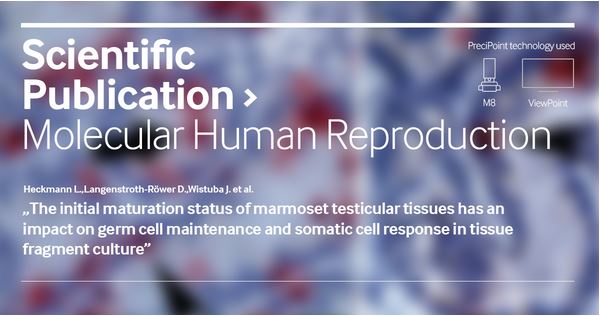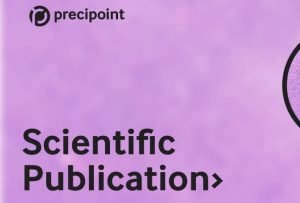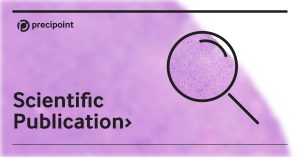Reproductive medicine is an important scientific topic, as it can offer help in cases of unwanted childlessness. In the study of Heckmann et al. „The initial maturation status of marmoset testicular tissues has an impact on germ cell maintenance and somatic cell response in tissue fragment culture”, our microscope helped to generate scans of testicular tissue to make certain types of cell morphologies visible.
Abstract:
„Successful in vitro spermatogenesis was reported using immature mouse testicular tissues in a fragment culture approach, raising hopes that this method could also be applied for fertility preservation in humans. Although maintaining immature human testicular tissue fragments in culture is feasible for an extended period, it remains unknown whether germ cell survival and the somatic cell response depend on the differentiation status of the tissue. Employing the marmoset monkey (Callithrix jacchus), we aimed to assess whether the maturation status of prepubertal and peri-/pubertal testicular tissues influence the outcome of testis fragment culture. Testicular tissue fragments from 4- and 8-month-old (n =3, each) marmosets were cultured and evaluated after 0, 7, 14, 28, and 42 days. Immunohistochemistry was performed for identification and quantification of germ cells (melanoma-associated antigen 4) and Sertoli cell maturation status (anti-Müllerian hormone: AMH). During testis fragment culture, spermatogonial numbers were significantly reduced (P <0.05) in the 4- but not 8-month-old monkeys, at Day 0 versus Day 42 of culture. Moreover, while Sertoli cells from 4-month-old monkeys maintained an immature phenotype (i.e. AMH expression) during culture, AMH expression was regained in two of the 8-month-old monkeys. Interestingly, the progression of differentiation to the later meiotic stage was solely observed in one 8-month-old marmoset, which was at an intermediate state regarding germ cell content, with gonocytes as well as spermatocytes present, as well as Sertoli cell maturation status. Although species-specific differences might influence the outcome of testis fragment experiments in vitro, our study demonstrated that the developmental status of the testicular tissues needs to be considered as it seems to be decisive for germ cell maintenance, somatic cell response and possibly the differentiation potential.”
Heckmann L. et al.
What was the M8 used for?
Our digital microscope was used for scanning the cell structures that were colored immunohistochemical and have a direct impact on the fertility of an individual. We are proud that our microscope is part of this paper and hope that it will also find use in some following research.
Where can I find the publication?
If you want to read the whole publication, click on this link:The initial maturation status of marmoset testicular tissues has an impact on germ cell maintenance and somatic cell response in tissue fragment culture









